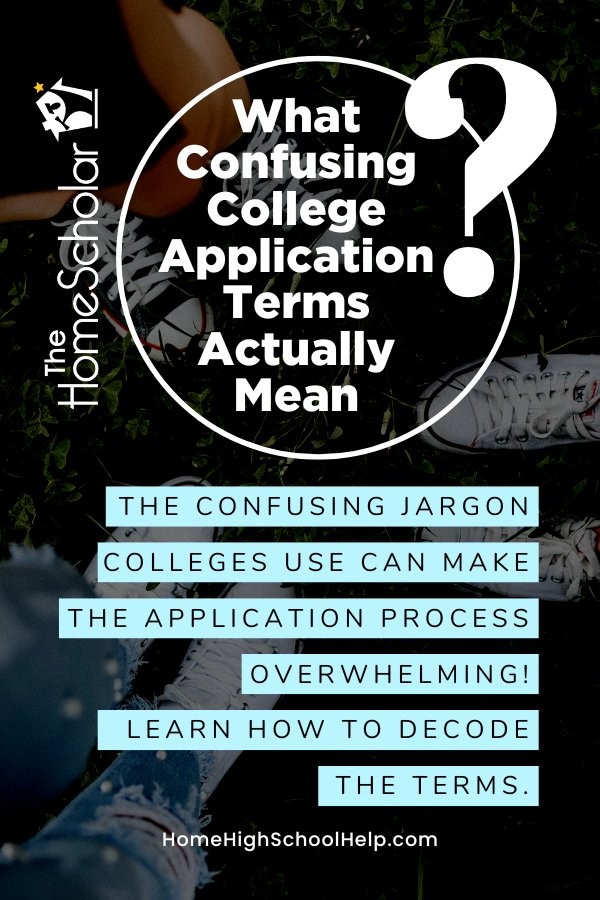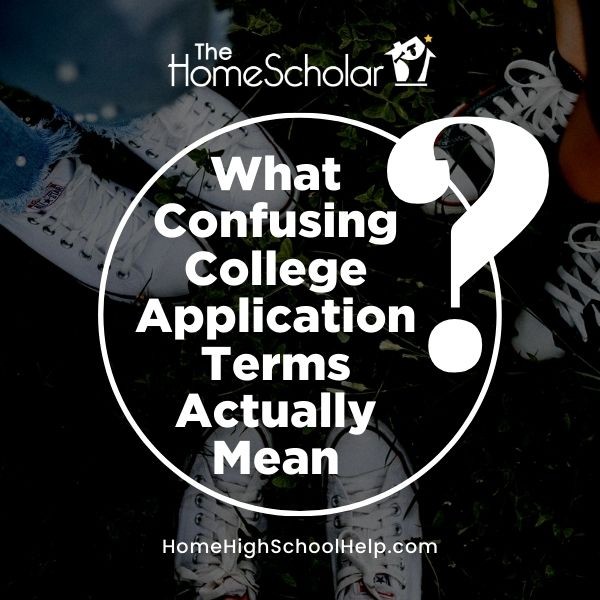What Confusing College Application Terms Actually Mean
If you don't know the terms colleges use, do you really know your options?
The college application process is already overwhelming, but what makes it even harder is the confusing jargon schools use. Terms like "Early Decision," "Holistic Review," and "Matriculation" get thrown around, but what do they really mean? Without understanding these terms, you could miss out on opportunities or commit to something that isn't the right fit for you.That's where we come in. This guide will break down the key vocabulary you need to know so you can navigate the application process with confidence. By the time you finish reading, you'll not only understand the terms but also know how to use them to your advantage.
Non-Restrictive Application Plans
These plans allow students to wait until May 1 to confirm enrollment, giving them more flexibility in choosing a college.
- Regular Decision – Students submit an application to an institution by a specified date and receive a decision within a reasonable and clearly stated period of time. A student may apply to other institutions without restriction.
- Rolling Admission – Applications are reviewed as they are received, and decisions are made on a rolling basis rather than a fixed deadline. This can be beneficial for students who want an early response.
- Early Action (EA) – Students apply to their preferred college early and receive a decision well before regular applicants. While students aren't required to commit, they must meet earlier application deadlines. Under non-restrictive Early Action, students can apply to multiple schools.
Restrictive Application Plans
These plans place limitations on students applying to multiple colleges early.
- Early Decision (ED) – The application process in which students make a commitment to a first-choice institution where, if admitted, they definitely will enroll. While pursuing admission under an Early Decision plan, students may apply to other institutions but may have only one Early Decision application pending at any time. Should a student who applies for financial aid not be offered an award that makes attendance possible, the student may decline the offer of admission and be released from the Early Decision commitment. The institution must notify the applicant of the decision within a reasonable and clearly stated period of time after the Early Decision deadline. Usually, a non-refundable deposit must be made well in advance of May 1. The institution will respond to an application for financial aid at or near the time of an offer of admission. Institutions with Early Decision plans may restrict students from applying to other early plans. Institutions will clearly articulate their specific policies in their Early Decision agreement.
- Restrictive Early Action (REA) – Similar to Early Action, but with restrictions on applying to other early programs, students make application to an institution of preference and receive a decision well in advance of the institution's regular response date. Each institution sets specific policies, so students should review guidelines carefully.
More Helpful Vocabulary
- Matriculation – The formal process of enrolling at a university after accepting an admission offer.
- Holistic Review – A method where colleges evaluate students based on the entire application, including extracurriculars, essays, and personal background, rather than focusing solely on test scores. This approach benefits students with strong experiences but lower standardized test scores.
- Demonstrated Interest – Colleges track how engaged and enthusiastic a student is by noting campus visits, interactions with admissions officers, and online engagement. A strong demonstrated interest can sometimes improve admission chances.
- Need-Blind Admission – A policy where colleges do not consider a student's financial situation or FAFSA information when making admission decisions, allowing for merit-based acceptance and preventing penalizing low-income students.
- Superscore – A practice where colleges take the highest section scores from multiple SAT or ACT attempts to create the best possible composite score.
- Deferred Enrollment – Can refer to two different situations:
- During Application: When a student applies Early Action but the college delays an offer of admission or rejection and lumps the student in with the Regular Decision students. This often happens because the college wants to see more information from that student – usually more documentation, new test scores, or extracurriculars. If your student finds themselves in this situation, be sure to send the university all that they are asking for and consider writing a letter of continued interest to show the school you're still passionate about attending.
- Gap Year: When a student is accepted but chooses to delay enrollment for a year or semester. Some schools encourage students to take gap years to travel and work, knowing that when the student returns, they will be more mature and likely to graduate with better grades. Other schools are distinctly unfriendly towards gap years and do not prefer students to take them. Gap-friendly schools will often require a formal request and a deposit to hold the student's spot.
- Articulation Agreement – A formal agreement between two schools (often a community college and a university) ensuring that credits transfer smoothly, helping students save time and money. This is fantastic to look for if your student has completed several dual enrollment courses.
By understanding these key terms, you can make informed decisions and take control of your college application process with confidence! Are there any terms you've come across that you needed a dictionary for?
Stay Informed
When you subscribe to the blog, we will send you an e-mail when there are new updates on the site so you wouldn't miss them.

 Login
Login









.jpg)

Comments